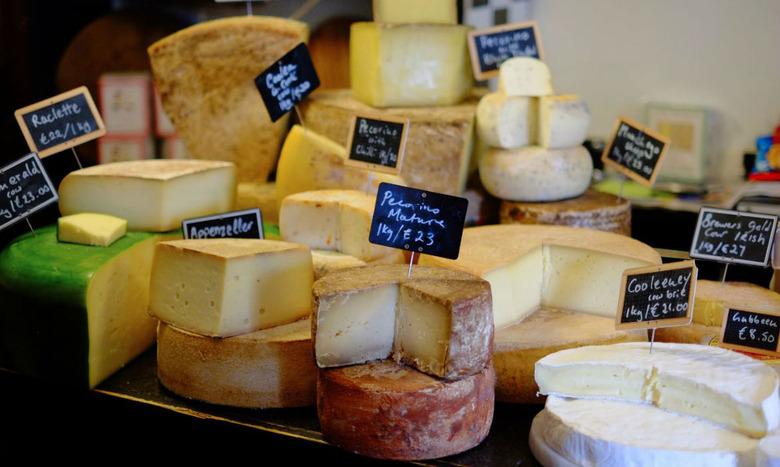Hooked On Cheese: Cow-To-Table: A Cheese's Journey
One non-negotiable requirement of my work is always being on the lookout for new cheeses (no complaints there). As a result of this ongoing search, every week I visit a slew of artisanal cheese shops, specialty retailers, and everyday grocery stores to see what's new in the cheese world. On a recent visit to the world-famous Zabar's in New York City, I ran into a friend doing some shopping and as we chatted she followed me to the cheese section. Zabar's has a lot of cheese – I'd guess around 400 selections to choose from. While gazing at the vast expanse of creamy goodness, my friend turned to me and asked innocently, "How do all these different cheeses get here every day?" Little did she know she'd opened a huge can of worms.
I started by telling her the buyers likely purchase some local cheeses directly from the producers. First-rate specialty shops prefer to buy direct when they can; if they've built a solid relationship with a cheesemaker, a store buyer can ask them to select specific wheels that fit the exact profile they want in terms of aging, etc. – a huge bonus for any retailer.
I next explained the vast world of cheese distribution. Distribution companies can be local, regional, national, or international. They purchase cheese from all over the world and bring it straight to the store's doorstep. A distributor's job is incredibly complex: they have to forecast the demand for each of their cheeses and balance these projections with the cheeses' varying lifespans, while simultaneously factoring in the buying requirements of each cheesemaker and the best shipping methods for each individual product. Whew! And then they have to keep the cheese in pristine condition until it is ordered by their customers. I got exhausted just thinking about the distribution process. So did my friend (sorry, Elinor!).
Then I described yet another way cheese makes it to the store: if a retailer is large enough, they can independently import their cheeses from foreign countries, without the help of a distributor. In these cases, they have to buy in larger amounts, negotiate payment terms and methods, arrange logistics, and take on the risk of their cheeses potentially being held by customs or the FDA and the risk of possible mishandling of the cheeses in transit.
* * *
So Elinor got her question answered, albeit a little more thoroughly than she expected. Transporting a sensitive, complex product like cheese to a retailer is pretty complex. Luckily, most of us just get to sit back and benefit from the fruits of many peoples' labor while enjoying the cheese. Knowing all this, you might want to hug your cheesemonger the next time they select the perfect cheese in flawless condition for your next cheese plate.
You can follow Raymond's cheese adventures on Facebook, Twitter and his website. Additional reporting by Madeleine James.
